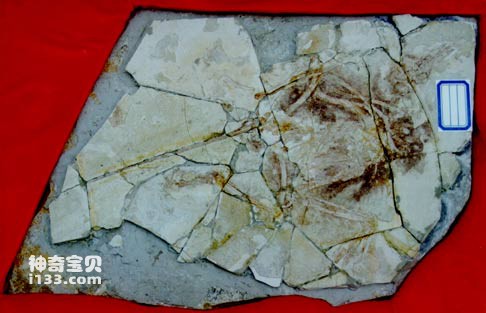In the 1930s, a notorious "Piltdown Incident" occurred in the field of paleoanthropology. Some people who wanted to gain fame put a human head on the lower jaw of an ape, painted it to look like a fossil, and buried it in Peeltown, England. Near Tang. They then deceived a paleoanthropologist who was struggling to find evidence of a transitional form of man-ape, causing him to be humiliated by publishing this deceptive "homo". After the "Piltdown Incident" was exposed, it was spurned by the scientific community and the public at large, and it also became a wake-up call for scientists.

"Liaoning Ancient Robber"
However, no one expected that more than 60 years later, in the last year of the 20th century, another major scam would break out in the field of dinosaur and ancient bird research. Researcher Dong Zhiming of the Institute of Anthropology jokingly calls it "the 'Piltang Incident' in dinosaur research."
In November 1999, the influential American National Geographic magazine, which always aims to accurately report the latest or important discoveries in the natural or historical and cultural fields, published an issue with a striking headline titled " Did Tyrannosaurus Rex Have Feathers?" The article is also accompanied by several colorful and beautifully crafted fossil photos and life restoration pictures of "hairy dinosaurs" in prominent positions. The article begins with a report on a strange animal that looks like a dragon but not a dragon, and looks like a bird but not a bird. The author quotes the researcher’s official name for this special animal—Liaoning Archaeoraptor. According to the description in this article, this strange animal that looks like a dragon but not a dragon, looks like a bird but not a bird, has a head and wings like Archaeopteryx, but has a club-shaped tail like a dromaeosaur, a typical small theropod dinosaur. The article claims that they have found the missing link in the evolution of dinosaurs into birds. Finally, the article concludes that the hypothesis that birds evolved from small theropod dinosaurs has been proven.
This report caused a sensation all over the world. A large number of scientists, especially supporters of the theory that birds originated from dinosaurs, were excited and applauded. Stephen and Crax, curators of the Blanding Dinosaur Museum in the United States, claimed that the fossil was produced in the Beipiao area in western Liaoning, China, and they bought it from a fossil dealer. Krex also solemnly stated that they would return the fossils to China once the research on the fossils was completed. This move was praised by the entire scientific community and society at large.
However, just as people were applauding for this achievement, a piece of unfortunate news was like a basin of cold water poured on the burning brazier, which stunned the researchers, and also made the entire scientific community and the whole world stunned. tongue. It turns out that this monster was deliberately made by fossil dealers by artificially processing and splicing the bone fossils of two different animals. They connected the body of an ancient bird to the tail of a dromaeosaur.
When the news came out, the media was in an uproar, and "Liaoning Archaeoraptor" suddenly became a major scandal in the world of paleontology. Paleontologist Dr. Olson wrote an article, accusing National Geographic magazine of "such an authoritative magazine publishing such a monster and strange article." Philippe Curie, one of the dinosaur experts and researchers, said regretfully: "I will never forget this incident, which makes me ashamed." For a time, the world's media hyped up this incident like adding fuel to the fire.
Although "National Geographic" magazine promptly published the news and admitted its mistake, the media believed that it was still difficult to wash away its guilt. Because it clearly knew that this fossil was smuggled out of China to the United States through illegal channels, but it not only published a special article introducing its research, but also tried its best to promote it, held lectures, and organized special exhibitions. Very happy. For a magazine with such international influence to publish such a disgraceful specimen, it not only seriously damages its reputation, but also has the adverse effect of promoting fossil smuggling and undermining the protection of fossils and other natural heritage.
Of course, "National Geographic" is also a victim from a certain perspective. Those who should really be responsible for this matter should be those fossil dealers who deliberately made false claims to deceive the public and those smugglers who used any means to make huge profits.
animal tags:
We created this article in conjunction with AI technology, then made sure it was fact-checked and edited by a Animals Top editor.